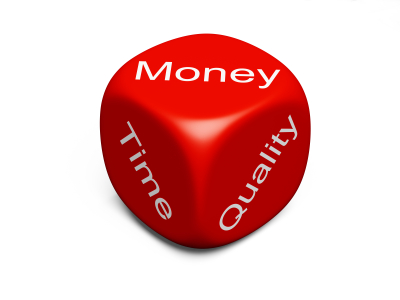
by Fronetics | Feb 25, 2015 | Blog, Content Marketing, Marketing, Social Media, Strategy

Answering the invariable question: “How often should I blog?”
“How often should I blog?” is a question we often get asked. The simple answer is: as often as possible so long as each post is valuable and as long as the quality doesn’t slip. Most people don’t like this response and push for something more tangible.
Research shows that blogging more frequently gets results
Research conducted by HubSpot found that companies with 51-100 pages on their website generate 48% more traffic than those with 1-50 pages. If you blog regularly your business could reach that 51 page threshold in less than one year.
HubSpot also found that companies who publish at least 15 blog posts per month get 5 times more traffic than those companies who don’t blog. Think this stat applies to big businesses? HubSpot found that small businesses with between 1 and 10 employees see the largest gains by posting more often.
Another reason to publish more often than less often: companies nearly double their sales leads by increasing blogging frequency from 3-5 times per month to 6-8 times per month.
Evidence shows that blogging more frequently gets results
At Fronetics we have seen these results first hand. To improve ranking, drive traffic, and increase leads we suggested that a client increase the number of blog posts published each week. The client was skeptical that increasing the blogging frequency would make a difference, especially to a company within the supply chain industry; however, they decided to give it a try. Within one month traffic increased by 23%, sales leads doubled, and the client landed a new customer.
Try increasing your blogging frequency for one month. Track your KPIs and assess whether increasing the blogging frequency is right for your business.
No matter how often you publish blog content make sure that your content retains these three elements:
- Consistent
- Quality
- Valuable
Fronetics Strategic Advisors is a management consulting firm focused on inbound marketing and strategy. We create and execute results-oriented programs for growth and value creation. Unlike other firms, our approach is data driven. We know ROI is important, so we track and measure results to drive success.


by Fronetics | Feb 25, 2015 | Blog, Content Marketing, Marketing, Social Media, Strategy

Answering the invariable question: “How often should I blog?”
“How often should I blog?” is a question we often get asked. The simple answer is: as often as possible so long as each post is valuable and as long as the quality doesn’t slip. Most people don’t like this response and push for something more tangible.
Research shows that blogging more frequently gets results
Research conducted by HubSpot found that companies with 51-100 pages on their website generate 48% more traffic than those with 1-50 pages. If you blog regularly your business could reach that 51 page threshold in less than one year.
HubSpot also found that companies who publish at least 15 blog posts per month get 5 times more traffic than those companies who don’t blog. Think this stat applies to big businesses? HubSpot found that small businesses with between 1 and 10 employees see the largest gains by posting more often.
Another reason to publish more often than less often: companies nearly double their sales leads by increasing blogging frequency from 3-5 times per month to 6-8 times per month.
Evidence shows that blogging more frequently gets results
At Fronetics we have seen these results first hand. To improve ranking, drive traffic, and increase leads we suggested that a client increase the number of blog posts published each week. The client was skeptical that increasing the blogging frequency would make a difference, especially to a company within the supply chain industry; however, they decided to give it a try. Within one month traffic increased by 23%, sales leads doubled, and the client landed a new customer.
Try increasing your blogging frequency for one month. Track your KPIs and assess whether increasing the blogging frequency is right for your business.
No matter how often you publish blog content make sure that your content retains these three elements:
- Consistent
- Quality
- Valuable
Fronetics Strategic Advisors is a management consulting firm focused on inbound marketing and strategy. We create and execute results-oriented programs for growth and value creation. Unlike other firms, our approach is data driven. We know ROI is important, so we track and measure results to drive success.


by Fronetics | Feb 23, 2015 | Blog, Content Marketing, Data/Analytics, Marketing, Strategy

Measuring blogging ROI is crucial to your overall marketing success.
Just as with outbound marketing activities, your company’s inbound marketing efforts should be given the same attention when it comes to Return on Investment (ROI) analysis. In fact, companies who measure inbound marketing ROI are more than 12 times more likely to generate better year-over-year returns. And with blogging being reported as the number one method for increasing website traffic, it should stand to reason that calculating ROI for your blogging efforts is crucial to your overall inbound marketing success.
Calculating ROI for blogging activities isn’t as straightforward as say, ROI from click-to-conversion, but its achievements can be measured in other ways. Consider employing a blend of these four categories to measure the effectiveness of your blogging efforts.
Audience and Content Reach
According to a 2013 HubSpot report, 85% of marketers reported increased web traffic within seven months of beginning inbound marketing activities. While it’s true that building a successful blog can take some time, there are things you can do (and measure) to speed its maturity. Encourage engagement and reach by crafting relevant and interesting content for your audience. This increases the likelihood your content is shared and commented on by your readers.
Track this: Beyond noting any increases in web traffic, track both your average cost per view and the number of comments and social shares your blog content receives.
Lead Generation
Tying revenue directly to publishing and distributing blog content can be difficult. Thinking about blogging activities within the context of your entire sales funnel can make it easier to determine effectiveness. As blog content is typically used to attract leads, encourage readers to subscribe to your blog or submit contact info to get higher-value content. Continued engagement nurtures leads and moves them further down the sales funnel.
Track this: The cost to get a lead. You can then determine the percentage of leads that move on to become qualified leads, the percentage of qualified leads that then become opportunities, and the percentage of opportunities that are ultimately won. At the end of the day, you’ll be able to calculate the revenue generated from leads that entered the funnel from blog content.
Intangibles
What are you gaining from networking with industry peers? Has your blog played a role in developing and nurturing professional relationships? Could you consider your blogging activities as part of your professional development? Blogging provides benefits outside of traditional marketing ROI measurements. Time spent researching, networking, writing, and engaging with others in your industry should certainly be considered when determining overall usefulness of blogging.
Track this: Sales cycle times. Staying current with industry trends and building a reputation as the go-to industry expert can be reflected in the type of customers and clients you are attracting. Are you attracting more high-quality leads and closing more ideal customers? Thank your blogging activity.
Cost of Customer Acquisition (CoCA)
By understanding how much it costs your business to acquire a new customer, you gain valuable insight into how much your business should be investing on blogging activities.
Track this: Calculate your (CoCA) by dividing your cost to blog by the number of visits the blog. For example, let’s say your company spent $500 on writing a blog post and 100 people visited your site. Your Cost of Visitor Acquisition will be $5 ($500 divided by 100). If 5% of those blog visitors convert into a lead then your Cost of Lead Acquisition (CoA) is $100 ($500 divided by 5 customers). If 10% of those leads actually buy something from you, your final Cost of Customer Acquisition is $50. Investing in one blog post will yield one new customer for every $50 you invest.
While it can feel a little unwieldy to measure ROI from blogging activities, keeping a strong focus on blogging goals and objectives will help to lend weight to metrics that will ultimately matter the most to you and your business. What measures does your company use to measure ROI for blogging?

by Fronetics | Feb 23, 2015 | Blog, Content Marketing, Data/Analytics, Marketing, Strategy

Measuring blogging ROI is crucial to your overall marketing success.
Just as with outbound marketing activities, your company’s inbound marketing efforts should be given the same attention when it comes to Return on Investment (ROI) analysis. In fact, companies who measure inbound marketing ROI are more than 12 times more likely to generate better year-over-year returns. And with blogging being reported as the number one method for increasing website traffic, it should stand to reason that calculating ROI for your blogging efforts is crucial to your overall inbound marketing success.
Calculating ROI for blogging activities isn’t as straightforward as say, ROI from click-to-conversion, but its achievements can be measured in other ways. Consider employing a blend of these four categories to measure the effectiveness of your blogging efforts.
Audience and Content Reach
According to a 2013 HubSpot report, 85% of marketers reported increased web traffic within seven months of beginning inbound marketing activities. While it’s true that building a successful blog can take some time, there are things you can do (and measure) to speed its maturity. Encourage engagement and reach by crafting relevant and interesting content for your audience. This increases the likelihood your content is shared and commented on by your readers.
Track this: Beyond noting any increases in web traffic, track both your average cost per view and the number of comments and social shares your blog content receives.
Lead Generation
Tying revenue directly to publishing and distributing blog content can be difficult. Thinking about blogging activities within the context of your entire sales funnel can make it easier to determine effectiveness. As blog content is typically used to attract leads, encourage readers to subscribe to your blog or submit contact info to get higher-value content. Continued engagement nurtures leads and moves them further down the sales funnel.
Track this: The cost to get a lead. You can then determine the percentage of leads that move on to become qualified leads, the percentage of qualified leads that then become opportunities, and the percentage of opportunities that are ultimately won. At the end of the day, you’ll be able to calculate the revenue generated from leads that entered the funnel from blog content.
Intangibles
What are you gaining from networking with industry peers? Has your blog played a role in developing and nurturing professional relationships? Could you consider your blogging activities as part of your professional development? Blogging provides benefits outside of traditional marketing ROI measurements. Time spent researching, networking, writing, and engaging with others in your industry should certainly be considered when determining overall usefulness of blogging.
Track this: Sales cycle times. Staying current with industry trends and building a reputation as the go-to industry expert can be reflected in the type of customers and clients you are attracting. Are you attracting more high-quality leads and closing more ideal customers? Thank your blogging activity.
Cost of Customer Acquisition (CoCA)
By understanding how much it costs your business to acquire a new customer, you gain valuable insight into how much your business should be investing on blogging activities.
Track this: Calculate your (CoCA) by dividing your cost to blog by the number of visits the blog. For example, let’s say your company spent $500 on writing a blog post and 100 people visited your site. Your Cost of Visitor Acquisition will be $5 ($500 divided by 100). If 5% of those blog visitors convert into a lead then your Cost of Lead Acquisition (CoA) is $100 ($500 divided by 5 customers). If 10% of those leads actually buy something from you, your final Cost of Customer Acquisition is $50. Investing in one blog post will yield one new customer for every $50 you invest.
While it can feel a little unwieldy to measure ROI from blogging activities, keeping a strong focus on blogging goals and objectives will help to lend weight to metrics that will ultimately matter the most to you and your business. What measures does your company use to measure ROI for blogging?

by Fronetics | Feb 18, 2015 | Blog, Content Marketing, Marketing, Strategy

Content curation is an essential component of a marketing strategy.
When it comes to creating and executing a successful marketing strategy, content curation is often forgotten. There are two reasons for this: 1) lack of knowledge about what content curation is; and 2) lack of knowledge about the role of content curation within a marketing strategy.
Here is what you need to know about content curation.
What is content curation?
Simply put, content curation is the act of identifying valuable content from a variety of sources and distributing via it your own platform in a strategic manner.
Heidi Cohen, President at Riverside Marketing Strategies, looked to content marketing experts so as to better understand what content curation is and how it can be used to achieve business objectives. She compiled 19 definitions. Here are three of the definitions:
Content curation is the process of identifying content created by others that will be valuable for your audience and then publishing it on your own platform. Michael Brenner of SAP and the B2B Insider blog.
Content curation is hand selecting content created by other sources and sharing them with your community. Best done when whoever is curating adds their own explanation for sharing, reaction or opinions. C.C. Chapman author of Author of Amazing Things Will Happen and co-author of Content Rules.
Content curation is the process of choosing the most relevant information to meet your readers’ needs on a specific topic like a good editor or museum curator. Content curation requires more than just the selection of information. It’s the assembling, categorizing, commenting and presenting the best content available. Heidi Cohen of Riverside Marketing Strategies.
Why content curation matters
A 2014 survey found that 76% of respondents reported that content curation positively impacted their business goals in 2013. 90% of respondents predicted that content curation will have a positive impact on their business goals in the upcoming year.
No one wants to hear about you all the time. As strange as it may sound, talking about your products, services, and your value all the time is bad for business. Here is where content curation comes in. Content curation will serve to establish your business as a thought-leader within the industry and as a trusted resource. Additionally, it will serve to increase your brand visibility. The great thing about content curation is that it enables you to achieve these business objectives without talking all about you.
Navigating the deluge of digital content available, and identifying the content that is relevant and valuable to your prospects and customers is critical.
Two things to remember:
Quality is key
There is a lot of digital clutter. Steller content curation sorts through the clutter and identifies quality content. Make sure that the content you curate is quality content and not clutter.
Be valuable and relevant
Make sure that every piece of content your curate is content that is both valuable and relevant to your prospects and customers.




